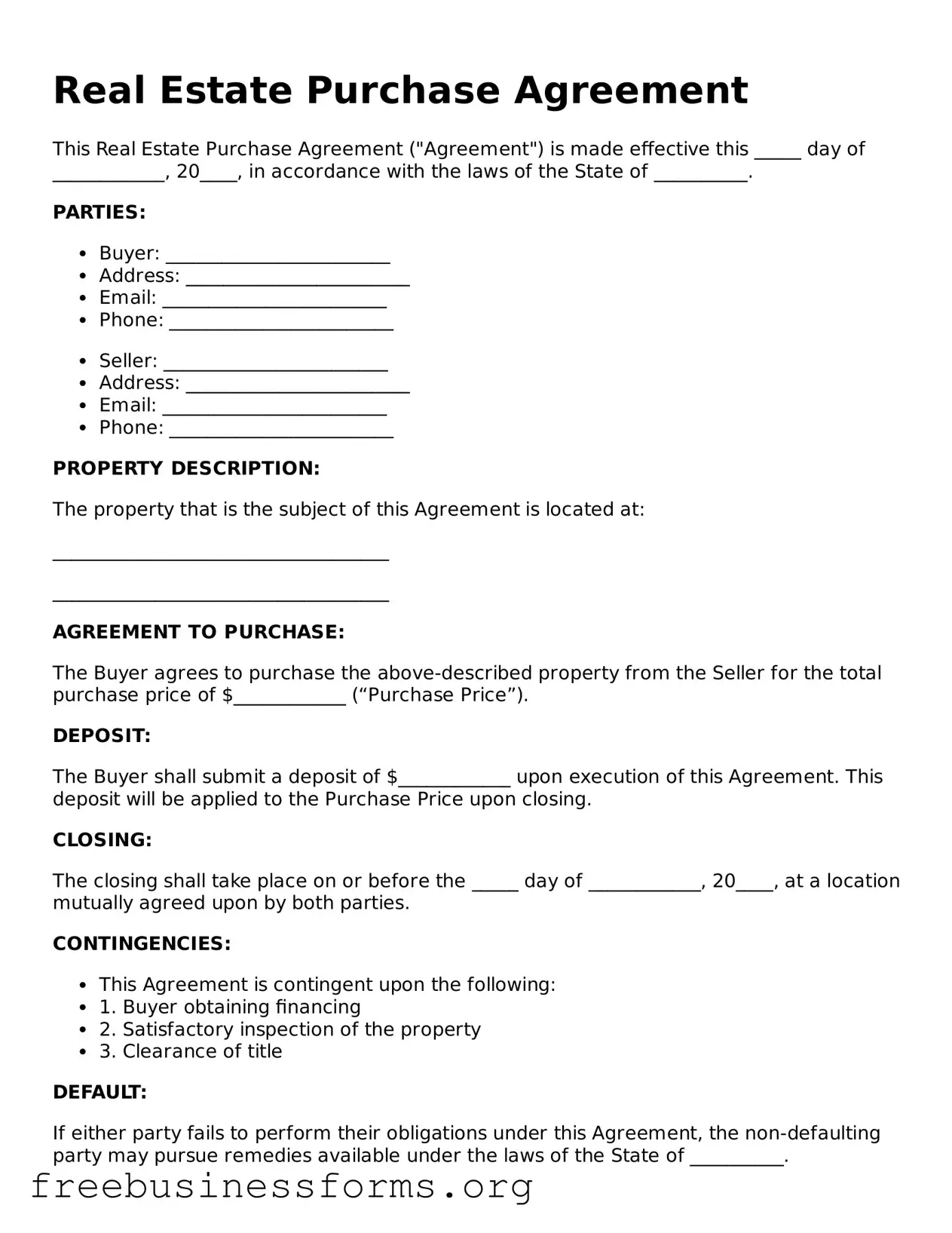Real Estate Purchase Agreement
This Real Estate Purchase Agreement ("Agreement") is made effective this _____ day of ____________, 20____, in accordance with the laws of the State of __________.
PARTIES:
- Buyer: ________________________
- Address: ________________________
- Email: ________________________
- Phone: ________________________
- Seller: ________________________
- Address: ________________________
- Email: ________________________
- Phone: ________________________
PROPERTY DESCRIPTION:
The property that is the subject of this Agreement is located at:
____________________________________
____________________________________
AGREEMENT TO PURCHASE:
The Buyer agrees to purchase the above-described property from the Seller for the total purchase price of $____________ (“Purchase Price”).
DEPOSIT:
The Buyer shall submit a deposit of $____________ upon execution of this Agreement. This deposit will be applied to the Purchase Price upon closing.
CLOSING:
The closing shall take place on or before the _____ day of ____________, 20____, at a location mutually agreed upon by both parties.
CONTINGENCIES:
- This Agreement is contingent upon the following:
- 1. Buyer obtaining financing
- 2. Satisfactory inspection of the property
- 3. Clearance of title
DEFAULT:
If either party fails to perform their obligations under this Agreement, the non-defaulting party may pursue remedies available under the laws of the State of __________.
GOVERNING LAW:
This Agreement shall be governed by and construed in accordance with the laws of the State of __________.
ENTIRE AGREEMENT:
This document constitutes the entire Agreement between the parties. It supersedes all prior negotiations and agreements, whether written or oral.
ACKNOWLEDGMENT:
By signing below, both parties acknowledge that they fully understand the terms of this Agreement and agree to abide by them.
______________________________
Buyer’s Signature Date
______________________________
Seller’s Signature Date
